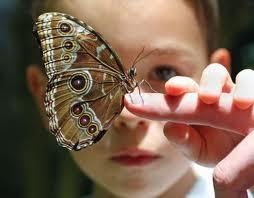People with autism have a developmental disability, a disorder in the communication and social capacity, which manifests itself differently in each person.  There are children with autism with average or high intelligence, and others may be of a lower average. Teaching an autistic child at home is not an easy task but it can have great satisfactions if your participation as a parent is active. For this reason, from this article, we want to guide you on how to teach my autistic son.
There are children with autism with average or high intelligence, and others may be of a lower average. Teaching an autistic child at home is not an easy task but it can have great satisfactions if your participation as a parent is active. For this reason, from this article, we want to guide you on how to teach my autistic son.
Index
- Organization
- Visual elements
- Schedule of activities
- Anticipate things
- Get him to know new places
Organization
The autistic children reject changes to the force and unexpected changes alter them much, so it is very important one organization at home that will help you organize your mind. Order the spaces, the furniture, the materials of your home. Mark the spaces with pictures to match. Avoid clutter.
To teach your autistic child, keep in good condition the spaces where they sleep, where they play, where they eat, where they watch television, etc., so that they understand where each thing touches, what touches at all times(if it is time that you only see things related to that moment) and when you play. This way we will avoid doing activities that do not correspond to the moment.
Visual elements
The visual strategies are very good to teach your child with autism. They are beneficial for your learning, for your interpersonal communication, to increase your understanding of the world around you and to regulate your behavior.
They can be drawings, symbols, pictures or photographs. No need to spend money, know your child, know what he needs. You can do it at home with any material that can be lined or laminated. Children with autism have a very good ability to store and remember images in their brain.
Schedule of activities
It can be placed in your room, in the living room, in the kitchen, in the spaces where the child frequents the most. The activity schedule is very effective in teaching your autistic child what to do throughout the day in a structured way. This encourages them to be willing to do the activities knowing what is going to happen, instead of doing what they feel like at the time.
When the activity is going to end, announce it in advance and when it is finished, remove the image and go to the next activity.
Sometimes an autistic child when he is very enthusiastic about an activity and is not allowed to do it or it ends, he becomes very irritable because he wants to continue doing it. With this activity scheduling strategy, you help him better accept the end of an activity.
Anticipate things
What is new to them, what they do not know and do not have an established image in their mind, generates anxiety and discomfort. This is why it is so important to anticipate the new events that are going to experience. For example, to explain activities, that something new is going to happen, that a visitor will come home, that there will be an excursion, etc.
This can be done with photographs, images or drawings made by us, which describe what is going to be done and explain when and how it will be done, giving the child information about the event. It better be sequenced. Examples:
- If we go to the hairdresser: 1. I arrive at the hairdresser 2. I sit down and the hairdresser cuts my hair 3. I look at how handsome I am in front of the mirror 4. I go home happy.
- If it’s time to do homework and it’s not time to play I put the toy in the closet 2. I sit down to do the homework 3. I pick up the toy again when I’ve finished the homework.
Therefore, what will happen is explained to him and the child is able to imagine what he will experience, reducing his anxiety and discomfort in the face of new events.
Get him to know new places
Being tempted to leave the house little or only what is extremely necessary, because of your child’s tantrums or inappropriate behavior, is a mistake to teach your autistic child properly. Do not worry about the looks of other people, what matters is you as a family unit.
Not leaving the house for fear of not handling a problematic situation is a mistake because it only makes your child isolate himself more and does not learn to behave appropriately in open places, in addition to becoming more restless and irritable due to being locked up for a long time without experimenting new stuff.
To improve problem situations and be able to go out with your child:
- anticipates what will happen with your schedule of activities
- change parks from time to time. Try to avoid always going to the same place
- when you make a visit or go somewhere where the child has to wait or cannot be entertained, take a toy that he likes or several.
- It is anticipated at home that the toys will be able to be used when you arrive at the place, so we will avoid that the child gets bored or touches things that should not be
This article is merely informative, we do not have the power to prescribe any medical treatment or make any type of diagnosis. We invite you to see a doctor in the case of presenting any type of condition or discomfort.




